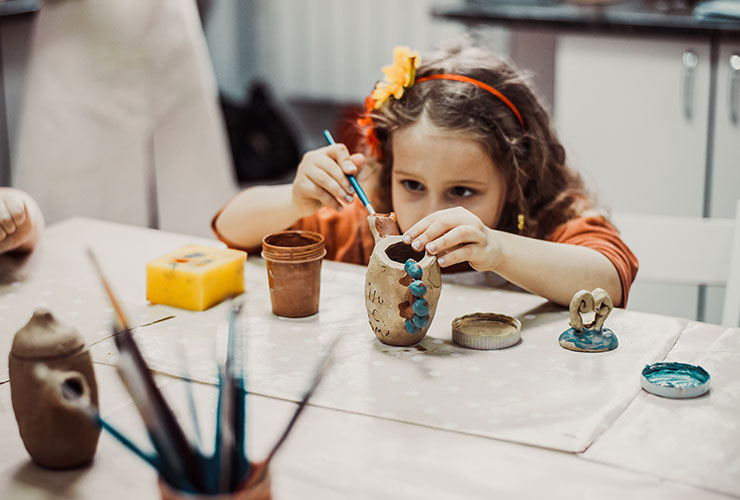What is STEAM and how did arts get involved?
By now almost anyone involved in education knows the promotion of STEM, but all of a sudden STEAM comes along. So what does this entail?
The promotion of technological studies has recently been expanded by the addition of arts. While many people are wondering how these disciplines go together, they prove to do surprisingly well. In fact, arts are apparently reinforcing scientific excellence.
Let’s start with the familiar original concept of supporting science education: STEM. The acronym names the fields of science, technology, engineering and mathematics. They are clustered together with the aim of denoting their common origin, their interconnectedness and particularly their shared importance for the progress of our society. Governments all around the world are reforming educational structures in order to encourage children to take interest in STEM and to go for a scientific career.
Some pedagogical institutes realised though that this isolationist approach to science does not necessarily represent the most effective path. The whole movement of upgrading STEM to STEAM by including arts into science education is most prominently led by the Rhode Island School of Design. The school has adapted its curriculum to the concept and created the platform StemtoSteam.org. It is no coincidence that the art’s initial letter “A” landed right in the middle of the new acronym, because it is the movement’s designated objective to “transform research policy to place Art + Design at the center of STEM”.[1] Besides, they also promote the integration of art and design into education and to encourage employers to hire artists and designers. STEMtoSTEAM advocates are convinced that arts are the driving force for innovations in the 21st century. In other words, the often very broad gap between humanities and sciences has to be bridged.
Specifically for school teachers, STEAM means incorporating creative thinking or visual learning into their lessons with greater vigour. Skills like inventiveness, self-expression, improvisation, intuition or imagination come to the fore and are actively encouraged. Such creative assets do not remain solitary capabilities, rather they work hand in hand with the acquisition of classic academic knowledge.

Scientific research lays the ground
An important study backing the novel approach was published by the Dana Arts and Cognition Consortium in 2004 under the title “Learning, Arts, and the Brain”. [2] It brought together cognitive neuroscientists from seven US universities who investigated the correlation between arts exercise and scientific excellence from differing angles.
Most importantly, the consortium highlights the need to continue researching, because a strong correlation between early arts training and improved cognition does not per se indicate a causal relation. In order to determine factual causation hard evidence is required.
Nevertheless, several aspects about the relationship between arts and science have already been made out. These are summarised the following way:
- “An interest in performing arts leads to a high state of motivation that produces the sustained attention necessary to improve performance and the training of attention that leads to improvement in other domains of cognition. […]
- Specific links exist between high levels of music training and the ability to manipulate information in both working and long-term memory […].
- In children, there appear to be specific links between the practice of music and skills in geometrical representation, though not in other forms of numerical representations.
- Correlations exist between music training and both reading acquisition and sequence learning. […]
- Training in acting appears to lead to memory improvement through the learning of general skills for manipulating semantic information. […]
- Learning to dance by effective observation is closely related to learning by physical practice, both in the level of achievement and also the neural substrates that support the organization of complex actions. Effective observational learning may transfer to other cognitive skills.”[2]

The variety of studies undertaken shows that the broad range of arts activities provides an equally broad range of potential cognitive benefits. Indeed, each form, be it music, visual art, dance or drama, engages different neural networks and therefore generates different effects. The exact neural mechanisms triggered by arts education are not yet clear, but further investigation is on its way to explain the apparent correlations.
The Dana Arts and Cognition Consortium is not the only profound voice supporting STEAM, though. Mae Jemison, for instance, who is both scholar and dancer herself, gave a TED talk in 2002 pointing out:
“The difference between science and the arts is not that they are different sides of the same coin, or even different parts of the came continuum, but rather, they are manifestations of the same thing. […] The arts and sciences are avatars of human creativity.” [3]
An cross-disciplinary educational approach represents therefore a logical and reasonable step.

Successful implementation displays the benefits
Additionally, STEMtoSTEAM lists several case studies that illustrate the great potential the concept of STEAM brings about in practice. For instance, there is the California College of Arts that used an artistic approach to support the fight against climate change at a United Nations Conference in 2011. The institute is convinced that designers can make a difference in people’s live and the environment by creating objects, machines and aesthetics.
Another example is the Blue School in New York City which was founded by the initiators of the show Blue Man Group. Its approach builds on three pillars: academic mastery, self and social intelligence, and creative thinking. The school’s goal is to prepare children for an unknown future in the best possible way. Education thus has to be reimagined so that curricula comprise and balance all the above-mentioned skills. To the initiators’ minds successful education cannot work when leaving out any of these realms.
Author: Andrea Ruscher
References
[1] STEM to STEAM (2018). What is STEAM? [online] Available at: http://stemtosteam.org/
[2] Asbury, C., Rich, B., ed. (2008). Learning, Arts, and the Brain. The Dana Cosortium Report on Arts and Cognition. New York/Washington: Dana Press.
[3] Jemison, M. (2002). Teach arts and sciences together. TED. [online] Available at: https://www.ted.com/talks/mae_jemison_on_teaching_arts_and_sciences_together/transcript
